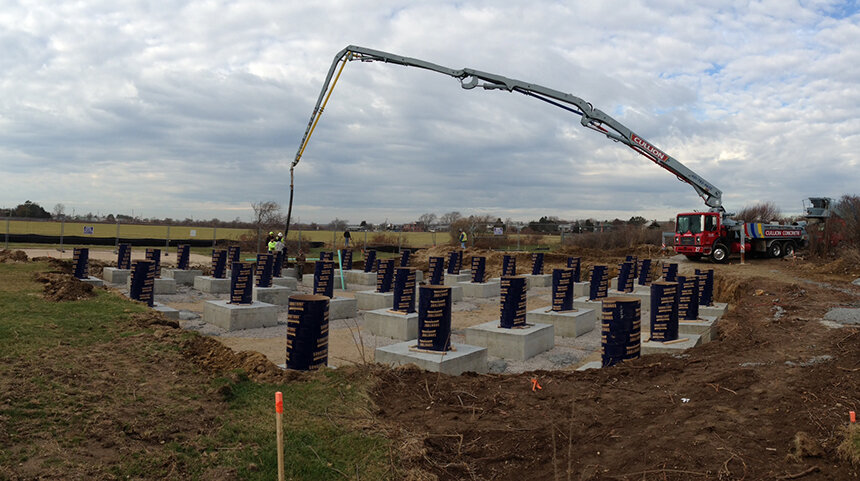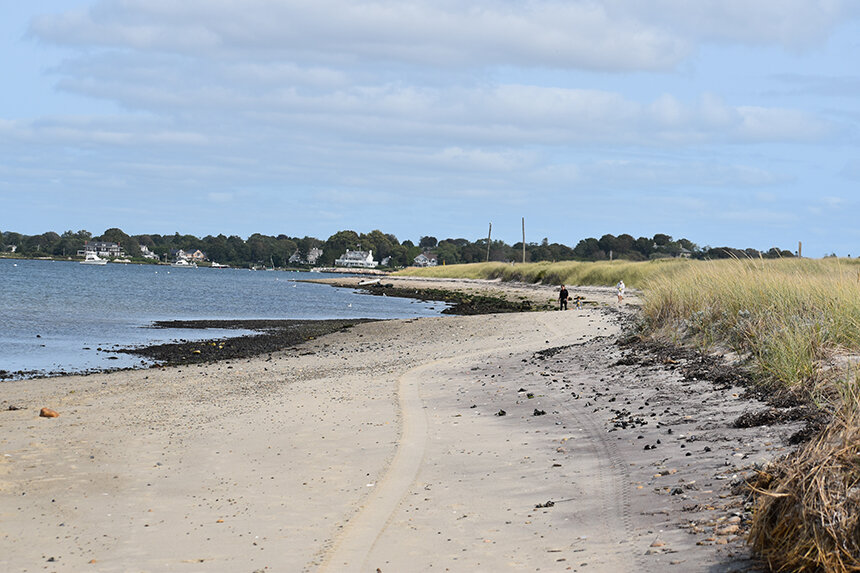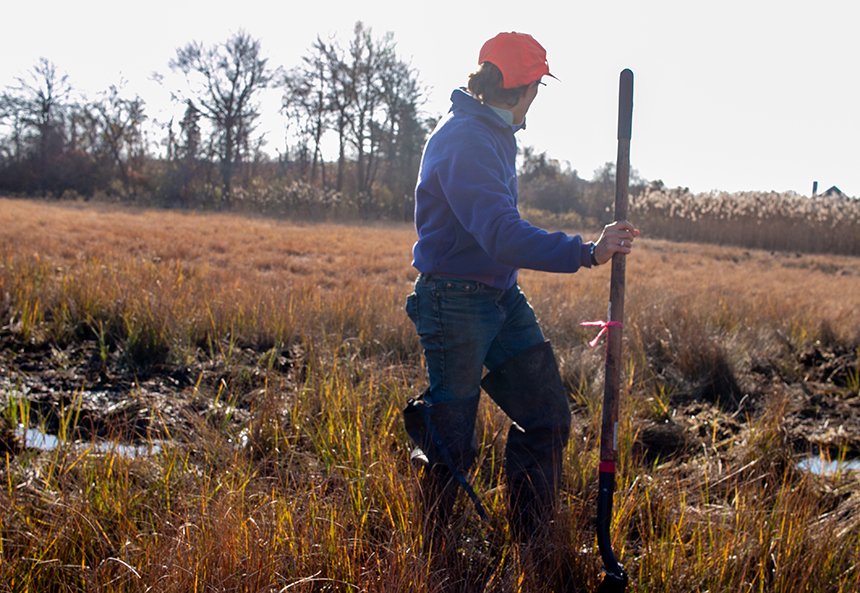As High Tides Swell, Warren Officials Urge Redevelopment
Town outlines vision for a revamped corridor that addresses challenges posed by climate crisis
July 12, 2021
WARREN, R.I. — When high tides surge into Belcher Cove, salt water backflows through underground storm pipes and bubbles up through a storm drain on Market Street. It floods this low-lying neighborhood near Redmond Street, and seeps into nearby businesses. The street can become impassable, unless cars willingly, or unknowingly, drive through the saltwater inundation.
When the water recedes, it takes with it all the detritus from the roadway, along with potentially hazardous materials from service-oriented businesses. Similar toxins and debris wash down highly developed Metacom Avenue and into the nearby Kickemuit River, which is on the state’s list of impaired waters largely because of this polluted stormwater runoff.
The increasing frequency and intensity of these economic hazards and environmental problems caused by flooding are the main drivers of the town’s effort to redevelop its Metacom Avenue corridor. The Market to Metacom initiative is at the planning and approval stages of a 10- to 20-year, multimillion-dollar revitalization of two neighborhoods that have been vulnerable to flooding for a generation. Economic factors also play a role in the proposed revamping of a corridor lined with homes and businesses.
“There are areas in town, at Market Street and Belcher Cove especially, that anytime there is a storm or king tide, there is flooding in the streets,” Bob Rulli, Warren’s director of planning and community development, said. “Several years ago, I was walking the East Bay Bike Path close to Belcher Cove. It was really eye-opening to take an inventory of the homes, their existing conditions, and how susceptible they would be to flooding. Then I drove down Metacom Avenue and it frustrated me. Why are we not doing better than this?”
Rhode Island’s smallest town is one of the most threatened by rising seas, flooding, storm surge and other coastal challenges brought by the climate crisis. Most of the town is bordered by salt marsh or a densely built commercial and residential waterfront lined with docks and steel and stone seawalls.
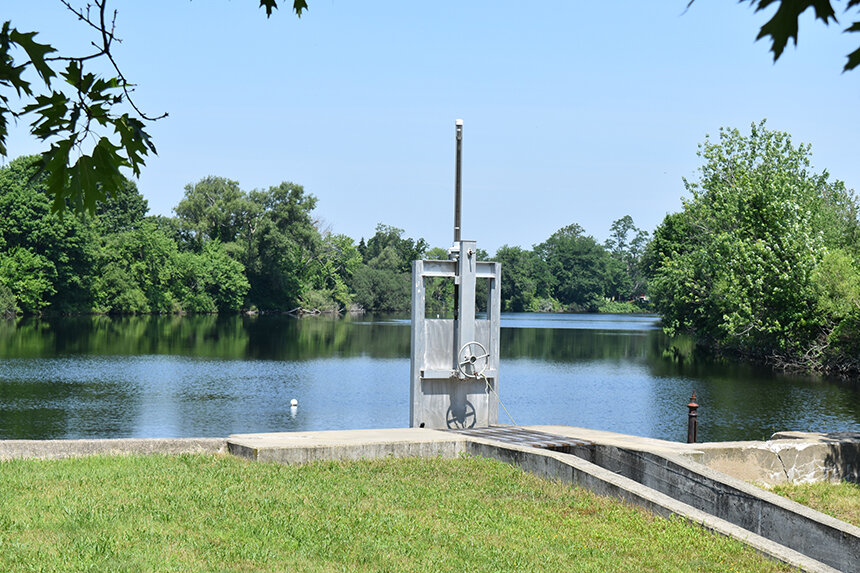
Wenley Ferguson, Save The Bay’s director of habitat restoration, has been monitoring Warren’s coastal flooding and spearheading adaptation projects for more than a decade. This Bristol County town is vulnerable, even on calm, sunny days, according to Ferguson, and Market Street now floods multiple times a year instead of only during large storms. The tide is broaching the edge of the buildings that line the creek along Market Street, she said.
“Infiltration is a good thing. We want the stormwater to infiltrate into the ground to remove the pollution found in runoff like nutrients and bacteria,” Ferguson said. “But with more intense rainstorms and increased precipitation events, stormwater runoff is even more of a concern. Then in coastal areas, we have increased sea-level rise, and that is causing roadways and low-lying areas to flood. Anywhere we can do stormwater retrofits is important, instead of allowing it to run untreated into the Kickemuit River.”
Allowing stormwater to infiltrate back into the ground, preventing runoff and providing more natural green space are planned to be part of the re-imagined Metacom Avenue. Solutions such as installing bioretention basins, planting native vegetation and using trees to filter stormwater will combat these environmental sensitivities, Rulli said during a presentation to the Planning Board in February.
He also noted that the plan is to have street curbing and subsurface chambers direct and collect stormwater, while natural plantings will provide absorption.
Complementing a mixed-use setting of retail stores, restaurants and residences, the Metacom Avenue Special Revitalization District could also house environmental refugees from Market Street, while creating a more pedestrian and environmentally friendly neighborhood. Affordable housing and increased public transportation are additional goals, Rulli said.
“We want to quantify those uses and environmental hazards so we plan for it in the future,” said Arnold Robinson, regional planning director at Fuss & O’Neill, a Providence-based engineering and planning firm working on Warren’s initiative. “There is a huge amount of paving on Metacom, with no on-site stormwater treatment, so water flows down to the Kickemuit River. We are mapping that, and asking, ‘In a redeveloped Metacom, what does stormwater flow look like?’ Let’s imagine a future where we integrate state-of-the-art stormwater systems, and can that give us a better future for the Kickemuit River? It will have huge costs, but also huge environmental benefits from stopping that water from reaching the river.”
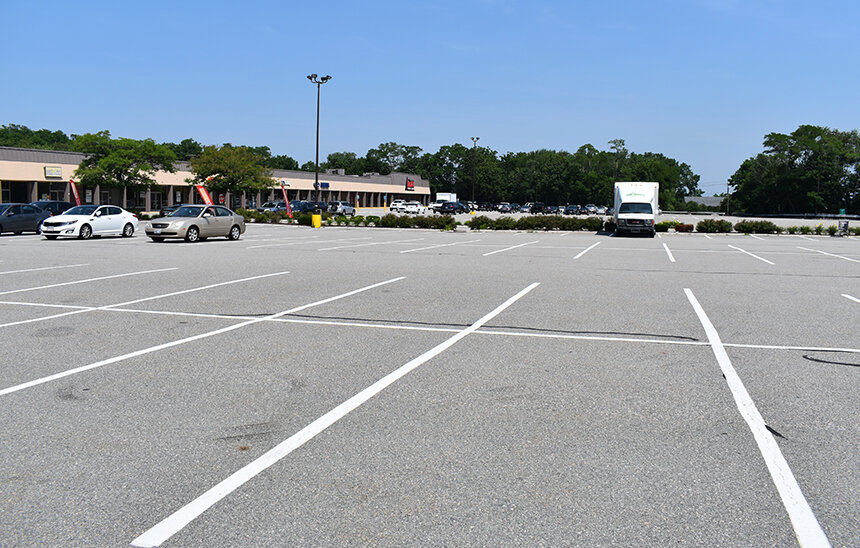
Paul Attemann of Providence-based Union Studio worked with Robinson to design a vision plan for Metacom Avenue’s Ocean State Job Lot Plaza, which Rulli presented to the Planning Board earlier this year. It offers a preliminary look at how a large concrete parcel can be re-envisioned for mixed uses, with a higher density and better land use.
“That might set the stage for other parcels along Metacom Avenue to take a similar step. It is only one parcel along the entire corridor, but if you can envision one after another with an integrated approach, it defines Metacom Avenue as a place, a destination, rather than a thoroughfare,” Attemann said. “We have tried to include as many opportunities as possible for green space and open space to allow for stormwater management. But it’s a tough balance to transform a large parking lot into a walkable, safe and pedestrian-friendly place to live and work.”
Tim Pray of Tap Printing on Metacom Avenue has witnessed plenty of flooding during his 33 years in business. Though flood waters haven’t compromised his immediate neighborhood, he said it’s a common problem further north near Kickemuit Village.
“At certain times when we get a lot of rain, we do see the impact from that,” Pray said. “There are storm drains that run off to the Kickemuit River and the Warren River. They handle the amount of inflow that is coming into them. But there could be road oils coming into the rivers. DEM [Department of Environmental Management] monitors both of those rivers for shellfishing, and they often deny shellfishing licenses in those areas because of that.”

Parts of Redmond Street, which connects Market Street to Child Street, flood regularly, according to Tony Amaral of Amaral’s Fish and Chips, though the water never comes as far as his restaurant. The opposite side of Redmond Street floods due to the creek, he said, impacting two auto body businesses at each end of the street.
“The town response in trying to look at alternatives is forward-thinking, because it’s trying to help these vulnerable property owners come up with alternatives to stay viable,” Ferguson said. “Warren is dealing with flooding of people’s primary homes and businesses, and it’s important to come up with community solutions to address these increasingly vulnerable areas.”
Rulli said the town is moving forward with conceptual plans thanks to a $122,500 grant from the Environmental Protection Agency. He said he welcomes public comment. The town is hosting online community workshops about the initiative July 14 and Sept. 8. A May 12 community workshop can be viewed here.
“It will be an education curve getting people to understand what it all means,” Rulli said. “It’s a lot to throw at them. But residents are definitely excited about the Metacom revitalization. It’s long overdue, and we have a very good vision. I imagine a town center that can serve all the residents and respect the neighborhoods on Metacom Avenue, but also provide services so that they are not so dependent on their car.”

